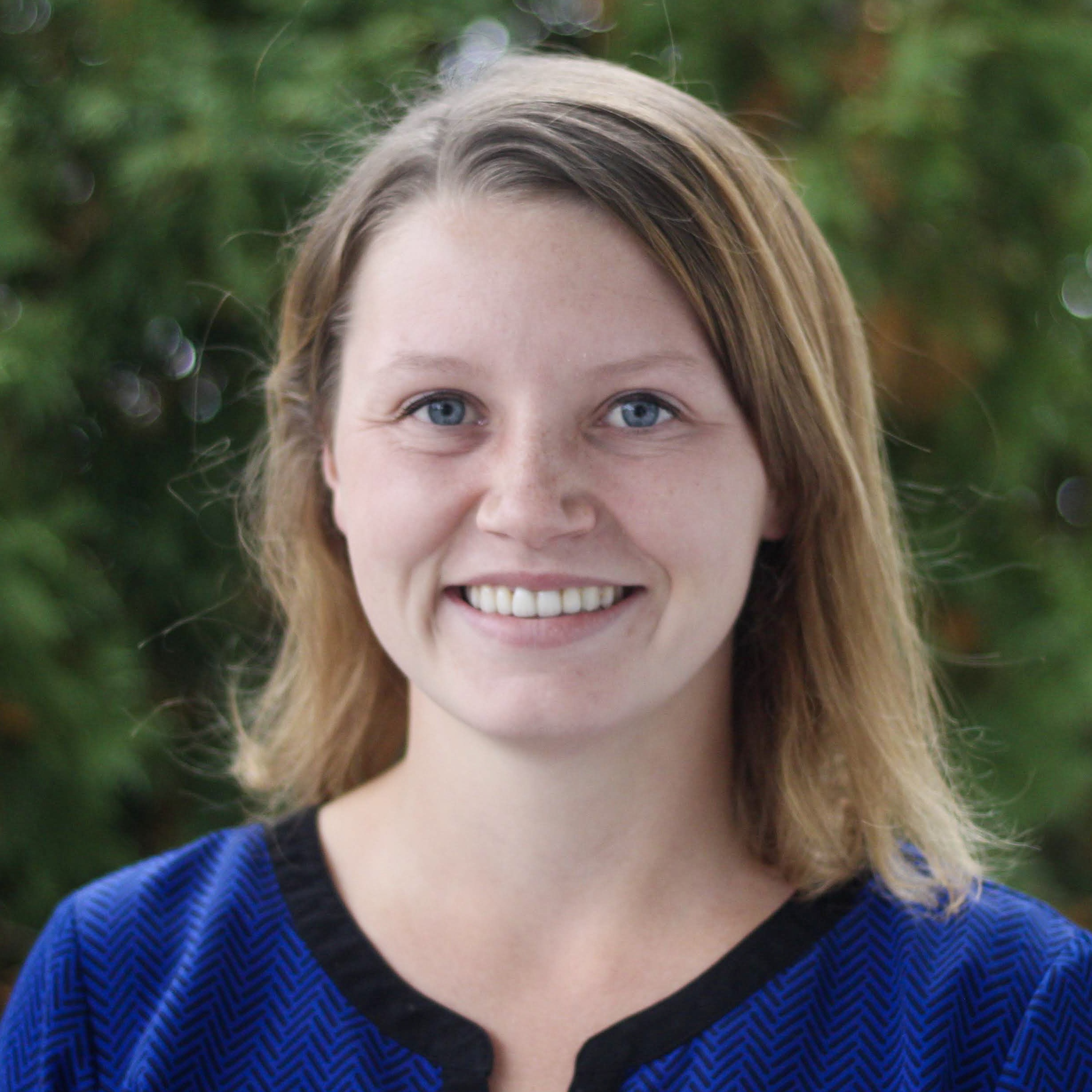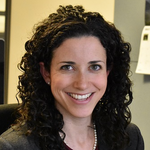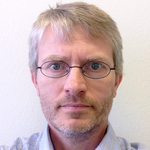Fall 2021 Seminar Schedule.
Join us every Friday (during the semester) from 12:45-1:45 pm online unless otherwise indicated.
Fall 2022 Schedule Summary |
||
| Date | Speaker | Seminar Titles/Topics |
| Sept 17th | Laura Buckley, Stephanie Grady, and Samantha Schildroth
PhD Students Department of Environmental Health BUSPH |
Novel Methods in Exposure Science |
| Sept 24th | Pat Kinney, ScD
Beverly A. Brown Professor of Urban Health and Sustainability Department of Environmental Health BUSPH |
Evolution of Air Pollution Exposure Assessment: A Personal Perspective |
| Oct 1st | No Seminar | |
| Oct 8th | Rima Habre, ScD, MS
Associate Professor of Clinical Population and Public Health Sciences Keck School of Medicine of University of Southern California |
Advancing Precision Environmental Health with Personal Exposure Monitoring and Geospatial Technologies |
| Oct 15th | No Seminar | |
| Oct 22nd | Susan Anenberg, PhD, MS
Associate Professor Environmental and Occupational Health Milken Institute School of Public Health The George Washington University |
Climate change, air pollution, and public health: From science to policy |
| Oct 29th | Gunnar Schade, PhD
Associate Professor Department of Atmospheric Sciences Texas A&M University |
Hydrocarbon Air Quality in Texas Shale Oil and Gas Areas – the Good, the Bad, and the Ugly |
| Nov 5th | Paige Brochu and Jennifer Oliver
PhD Candidates Department of Environmental Health BUSPH |
Early Insights Into Developing a Nationwide Nature Index
and Exposure to Per- and Polyfluoroalkyl Substances and Child Lung Function |
| Nov 12th | Raquel Jimenez Celsi
PhD Candidates Department of Environmental Health BUSPH |
School Greenness and Student-Level Academic Performance in Santiago, Chile |
| Nov 19th | Peter James, ScD, MHS
Assistant Professor Department of Environmental Health Harvard T.H. Chan School of Public Health |
Seeing the Forest for the Trees: Innovative Approaches to Estimate How Nature Influences Human Health |
| Nov 26th | No Seminar | |
| Dec 3rd | Ami Zota, ScD, MS
Associate Professor Environmental and Occupational Health Milken Institute School of Public Health The George Washington University |
TBD |
| Dec 10th | TBD | TBD |
September 17



Speakers: Samantha Schildroth, Stephanie Grady, and Laura Buckley
PhD Students
Department of Environmental Health
BUSPH
Title: Novel Methods in Exposure Science
Summary: For the Fall semester, the Gijs van Seventer Environmental Health Seminar will center on cutting-edge methods used to characterize human exposures to environmental contaminants, including personal exposure, “big data” resources, and techniques related to the exposome. In this introductory talk, titled “Novel Methods in Exposure Science,” we will give an overview of several of these novel methods and introduce the Fall 2021 seminar speaker line-up.
September 24
Speakers: Pat Kinney, ScD
Beverly A. Brown Professor of Urban Health and Sustainability
Department of Environmental Health
BUSPH
Title: Evolution of Air Pollution Exposure Assessment: A Personal Perspective
Summary: In this talk, Dr. Kinney will discuss the ways in which exposure assessment for air pollution has evolved (or not) over the past 40 years as the questions of interest, and technology for monitoring, have changed. He will also discuss future needs in this area.
Bio: Dr. Kinney joined the School of Public Health faculty in January 2017 as the inaugural Beverly Brown Professor of Urban Health. He was trained as an air pollution epidemiologist at Harvard School of Public Health, and came to BU after two decades at the Columbia University Mailman School of Public Health. In his time at Columbia, he showed how warming temperatures make air pollution like urban smog worse, and more harmful to populations. He led the development of an integrated modeling system to predict the air pollution health effects of climate change into the future. Working at the intersection of climate change, health, and policy, Kinney has conducted research from the South Bronx to China to rapidly growing cities throughout Africa. At Columbia, he also created an interdisciplinary research and teaching program examining the potential impacts of climate change on health. At BU, Kinney is developing a new program that focuses on assessing the health benefits of urban climate action plans, via strategies to promote active transport, green infrastructure, and clean vehicles.
Meeting Format: Hybrid
October 8
Speakers: Rima Habre, ScD, MS
Associate Professor of Clinical Population and Public Health Sciences
Keck School of Medicine of University of Southern California
Title: Advancing Precision Environmental Health with Personal Exposure Monitoring and Geospatial Technologies
Summary: Personal exposure to air pollution and other environmental risk factors is highly variable in space and time and depends on human time-activity and mobility patterns, behaviors, indoor and outdoor sources. Especially in large population studies, personal exposure to air pollution is often approximated by static, outdoor residential concentrations predicted with varying degrees of spatiotemporal resolution and accuracy. This talk will demonstrate how advances in wearables, personal monitoring and geospatial technologies are allowing researchers to assess highly personalized and spatiotemporally resolved exposures within actual activity spaces to inform precision environmental health. These advances ultimately lead to a better understanding of contextual effects, temporality, and important microenvironments driving adverse exposures and health effects. They also significantly reduce exposure measurement error and amplify statistical power to detect relevant exposure-health associations.
Bio: Rima Habre, ScD is an Associate Professor of Environmental Health and Spatial Sciences at the University of Southern California. Her research aims to understand the effects of co-occurring environmental exposures, air pollution mixtures and social stressors on the health of vulnerable populations across the life course. She develops methods to advance personal exposure assessment using personal monitoring (e.g., wearables, sensors), geolocation, and machine-learning based spatiotemporal models. Dr. Habre co-chairs the Geospatial Working Group in the national NIH Environmental Influences on Child Health Outcomes (ECHO) program. She co-leads the Exposure Sciences Research Program in the Southern California Environmental Health Sciences Center (NIEHS Core Center). Dr. Habre is also the Director of Exposure Assessment in two large research centers at USC investigating the effects of air pollution exposure during pregnancy and the postpartum period on maternal and child health. She received her Doctor of Science in environmental health with a concentration in exposure science from the Harvard T.H. Chan School of Public Health.
Meeting Format: Virtual
October 22
Speaker: Dr. Susan Anenberg
Associate Professor of Environmental and Occupational Health
Milken Institute School of Public Health
The George Washington University
Title: Climate change, air pollution, and public health: From science to policy
Summary: While air quality has improved in the U.S. as a result of the 1970 Clean Air Act and its 1990 Amendments, several challenges remain: continued health impacts even in areas meeting air quality standards, persistent inequities in air pollution exposure, and climate change. This talk will address the large and inequitable burden of air pollution on public health, impacts of climate change on air pollution, and approaches for improving public health through greenhouse gas and air pollution mitigation. Climate mitigation actions taken in cities in particular can have multiple benefits for air quality and public health, in addition to lowering greenhouse gases. We will discuss how the current state of the science indicates that a change is needed to transition from managing air quality through technological controls towards burning less fuel in the first place.
Bio: Susan Anenberg is an Associate Professor of Environmental and Occupational Health and of Global Health at the George Washington University Milken Institute School of Public Health. She is also the Director of the GW Climate and Health Institute. Dr. Anenberg’s research focuses on the health implications of air pollution and climate change, from local to global scales. She currently serves on the U.S. Environmental Protection Agency’s Science Advisory Board and Clean Air Act Advisory Committee, the World Health Organization’s Global Air Pollution and Health Technical Advisory Group, and the National Academy of Science’s Committee to Advise the U.S. Global Change Research Program. She also serves as Secretary of the GeoHealth section of the American Geopysical Union. Previously, Dr. Anenberg was a Co-Founder and Partner at Environmental Health Analytics, LLC, the Deputy Managing Director for Recommendations at the U.S. Chemical Safety Board, an environmental scientist at the U.S. Environmental Protection Agency, and a senior advisor for clean cookstove initiatives at the U.S. State Department.
Meeting Format: Virtual
Suggested Readings:
- Kerr, G.H., D.L. Goldberg, S.C. Anenberg (2021) COVID-19 lockdowns reveal persistent disparities in nitrogen dioxide pollution levels. Proceedings of the National Academy of Sciences, https://doi.org/10.1073/pnas.2022409118. Southerland, V.A., S.C. Anenberg, M. Harris, J. Apte, Hystad, A. van
- Donkelaar, R. Martin, M. Beyers, A. Roy (2021) Assessing the distribution of air pollution health risks within cities: a neighborhood-scale analysis leveraging high resolution datasets in the Bay Area, California. Environmental Health Perspectives, https://doi.org/10.1289/EHP7679.
- Anenberg, S.C., S. Haines, E. Wang, N. Nassikas, P. Kinney (2020) Synergistic health effects of air pollution, temperature, and pollen exposure: A systematic review of epidemiological evidence. Environmental Health, doi: 10.1186/s12940-020-00681-z.
October 29
Speaker: Gunnar Schade, PhD
Associate Professor
Department of Atmospheric Sciences
Texas A&M University
Title: Hydrocarbon Air Quality in Texas Shale Oil and Gas Areas – the Good, the Bad, and the Ugly
Summary: We have evaluated air quality in two prominent Texas shale areas with oil and gas production related hydrocarbon emissions. Measurements were taken both in rural, sparsely populated areas and near small conurbations central to the shale plays. In the eastern Eagle Ford, low pad site density and low production volumes seemed to have only modest effects on exposure to air toxics at nearby dwellings. In the western and central Eagle Ford, where pad site density and production volumes are much higher, air toxics exposure is higher as well, but can depend strongly on nearness to well sites and weather conditions. The worst situations we encountered were (i) related to a blowout in a rural area of the Eagle Ford, causing excessive air toxics levels at nearby receptors, mostly overnight; or (ii) related to booming production in a newly developing area of the Permian basin adjacent to popular tourist destinations. In all cases, benzene represents the most worrisome air toxic. While its emissions used to be dominated by tailpipe exhausts, benzene air quality in urban areas has continuously improved in the last three decades, and benzene abundance now appears to be dominated by direct emissions from the oil and gas industry, both via fugitive emissions and gas flares, possibly affecting long-term health of shale area residents.
Bio: Dr. Schade received a Diplom (MSc) in 1993, and a Doctorate (PhD) in 1997, in Chemistry from the Johannes Gutenberg University in Mainz, Germany. Both his theses were carried out in the Air Chemistry Division at the Max Planck Institute for Chemistry, and focused on atmospheric trace gas measurements. His Master’s thesis dealt with amine emissions from agriculture, his PhD thesis described the mechanisms and relevance of carbon monoxide emissions from plant matter with a focus on leaf and grass litter. In 1998, he went to UC Berkeley for a postdoctoral position with Dr. Allen Goldstein, measuring volatile organic compound emissions in the Sierra Nevada Mountains of California. In 2002, Dr. Schade received a prestigious Emmy Noether grant from the German Research Service (DFG) and started his own research group at the University of Bremen in northern Germany in 2003, studying agricultural trace gas emissions. In 2005, he moved on to a tenure track position at Texas A&M University where he has been ever since. Dr. Schade’s focus remains on atmospheric trace gases and their fluxes between the surface and the atmosphere. He has carried out two large research projects in Houston, TX, focusing on urban area emissions and the urban environment and its heat island as a proxy for climate change. With the ongoing “fracking boom” in Texas, he recently switched his focus to oil and gas exploration related hydrocarbon emissions from that industry. Since 2016 he has worked with local community volunteers in Texas to determine air toxics exposures and analyzed the industry’s emissions effects on air quality in these mostly rural areas of Texas.
Meeting Format: Virtual
November 5th
Presentations by PhD Candidates
Paige Brochu
PhD Candidate
Department of Environmental Health
BUSPH
Title: Early Insights Into Developing a Nationwide Nature Index
Summary: Research has shown that exposure to nature such as parks and bluespace can benefit human health through ecosystem services such as reducing air and noise pollution and extreme heat. A central gap in the nature-health benefits research is that greenness, a commonly used exposure metric, represents only a single aspect of exposure to nature. The majority of studies only focus on one metric of nature such as distance to park, total greenness, or distance to bluespace, potentially underestimating the complete relationship between nature and health. Looking to the field of ecology, geography, and urban planning, there is support for using simultaneous measures such as greenness, access to park, bluespace, and tree canopy in order to capture a more holistic nature exposure. This presentation will focus on Paige’s dissertation work with progress updates, next steps, and insight into developing a composite nature index based on commonly used metrics in epidemiological and exposure literature.
and
Jennifer Oliver
PhD Candidate
Department of Environmental Health
BUSPH
Title: Exposure to Per- and Polyfluoroalkyl Substances and Child Lung Function
Summary: The adverse health effects following exposures to per- and polyfluoroalkyl substances (PFAS) are an important public health issue, yet little is known about the effects of PFAS on pulmonary health during critical developmental periods. Due to rapid lung development and growth that occurs during the prenatal period through childhood, these developmental periods may be particularly susceptible to the adverse effects of PFAS on lung function. Understanding if PFAS adversely impacts lung health in early life is critical for identifying future intervention strategies and improving lung trajectories across the life course. The toxicological evidence suggests that PFAS may effect lung health through delayed alveolar cell maturation or altered surfactant development. However, there is limited epidemiological literature exploring the association between PFAS and lung health in children. Our research aims to explore the impacts of exposure to PFAS and PFAS mixtures during critical periods of lung growth and development and assess how these exposures may impact lung function trajectories over time. PFAS are a class of persistent chemicals that are ubiquitous in our environment resulting in a large percent of the population being continuously exposed and require additional research to determine their adverse health effects in susceptible populations.
Meeting Format: Virtual
November 12th
Raquel Jimenez Celsi
PhD Candidate
Department of Environmental Health
BUSPH
Title: School Greenness and Student-Level Academic Performance in Santiago, Chile
Summary: Contact with nature has been associated with numerous health benefits for children. Previous research suggests greenness exposure might foster children’s learning and improve academic performance, but evidence from studies to date is mixed. The limited studies available have used aggregated school-level data have been carried out in developed countries of the northern hemisphere, limiting the generalizability of findings. We present results from an observational study in Chile linking administrative data to remote sensing-derived school greenness estimates in order to evaluate the association between vegetation in schools and student-level academic performance.
Meeting Format: Virtual
November 19th
Assistant Professor
Department of Environmental Health
Harvard T.H. Chan School of Public Health
Title: Seeing the Forest for the Trees: Innovative Approaches to Estimate How Nature Influences Human Health
Summary: As a society, we inherently recognize the value of nature; however, research is only recently quantifying how nature impacts our health. In this talk, I will discuss how we define nature, why we believe that nature is linked to health, and how we measure exposure to nature and health outcomes. I will detail novel approaches to study nature and health, including the use of mobile health technologies and application of deep learning algorithms to street view images. Combined, these data will provide relevant, actionable information for planners, landscape architects, and policy makers to design communities that are optimal and equitable for health, and will aid us in addressing the climate crisis. I hope that you will leave this talk believing that access to nature is a human right, not a privilege, and we should view it (and fund it) as such.
Bio: Peter James, ScD is an Associate Professor in the Department of Population Medicine at Harvard Medical School and the Harvard Pilgrim Health Care Institute, and an Assistant Professor at Harvard TH Chan School of Public Health. Trained in environmental health and epidemiology, Peter has focused his research on estimating the influence of spatial factors, including exposure to nature, the built environment, the food environment, air pollution, light pollution, noise, and socioeconomic factors, on health behaviors, mental health, and chronic disease. He has over a decade of experience working with large prospective cohort studies, including the Nurses’ Health Studies, the Framingham Heart Study, and the Southern Community Cohort Study, where he has aided in the creation of many spatial exposure metrics and linked them to health data. Peter received a BA from University of Pennsylvania, an MHS at Johns Hopkins Bloomberg School of Public Health, and an ScD from Harvard TH Chan School of Public Health.
Suggested Reading:
- James P, Hart JE, Banay RF, Laden F. Exposure to Greenness and Mortality in a Nationwide Prospective Cohort Study of Women. Environ Health Perspect. 2016 Sep;124(9):1344-52. doi: 10.1289/ehp.1510363. Epub 2016 Apr 14. PMID: 27074702; PMCID: PMC5010419.
Meeting Format: Hybrid
December 3rd
Associate Professor
Environmental and Occupational Health
Milken Institute School of Public Health
The George Washington University
Title: TBD
Summary: TBD
Bio: Ami Zota is an Associate Professor in the Department of Environmental & Occupational Health at the George Washington University Milken School of Public Health. Dr. Zota’s work seeks to secure environmental justice and improve health equity through advancements in science, policy, and clinical practice. Her research identifies novel pathways linking social disparities, environmental exposures, and reproductive and children’s health. She received a career development award from the National Institutes of Health for her research on environmental health disparities and was recently recognized as a Pioneer Under 40 in Environmental Public Health by the Collaborative on Health and the Environment. She is currently an Associate Editor of Journal of Exposure Science and Environmental Epidemiology and on the Editorial Boards of Environmental Health Perspectives and Environmental Epigenetics.
Dr. Zota is equally committed to developing innovative approaches for science translation so that her research can more effectively be used to inform individual and collective decision-making. Her research has been featured in high-impact national and international media publications including the Washington Post, LA Times, USA Today, Huffington Post, and the Atlantic Monthly. She has helped shape health and safety standards for consumer product chemicals by participating in legislative briefings, providing technical assistance to the NGO community, and communicating science through mainstream and social media outlets.
Meeting Format: TBD

